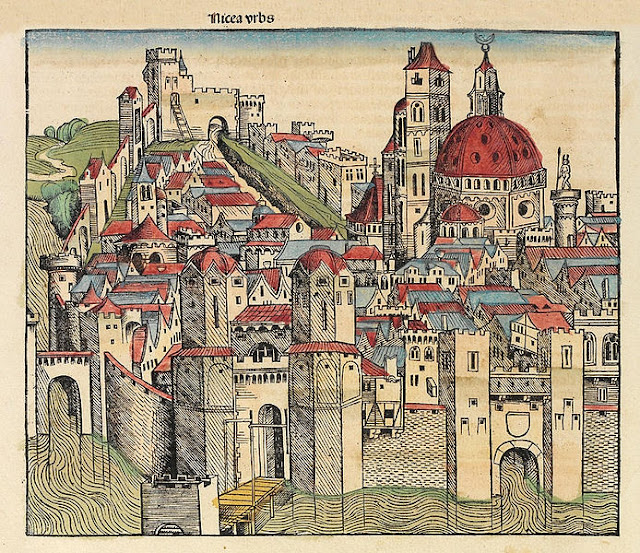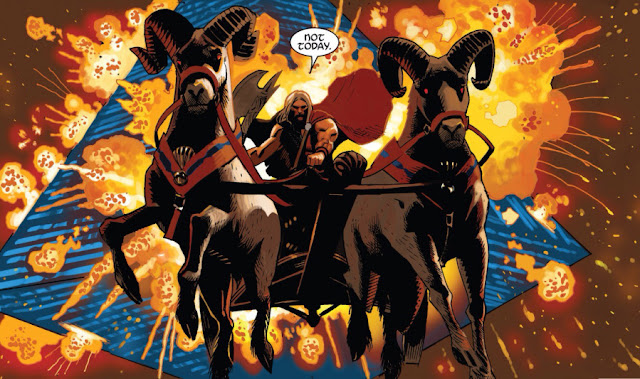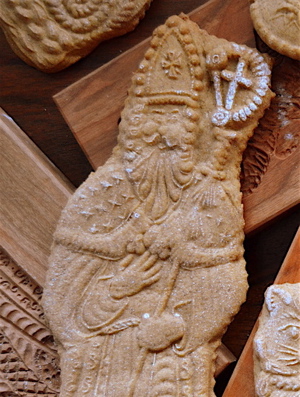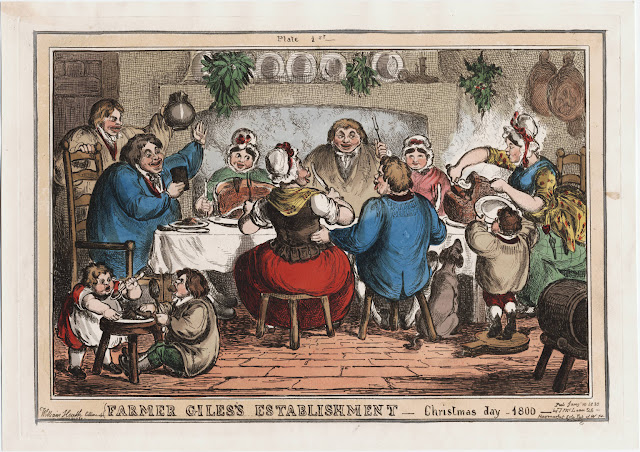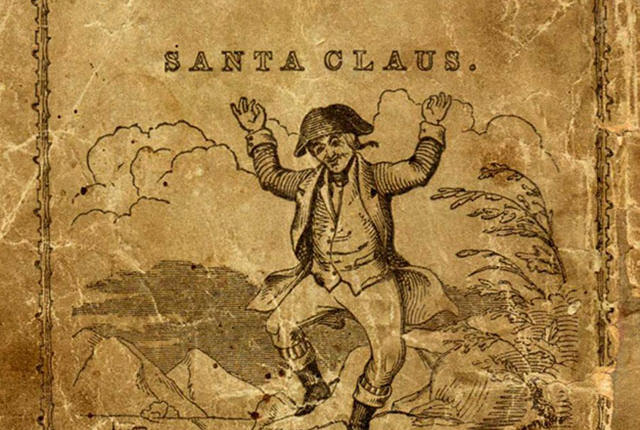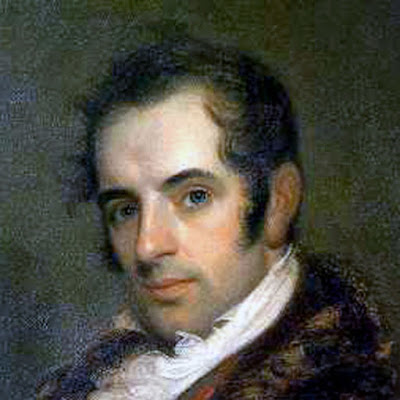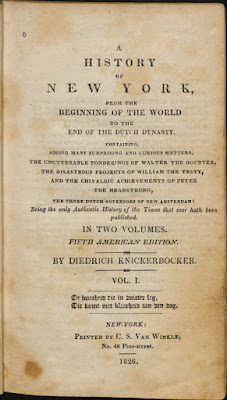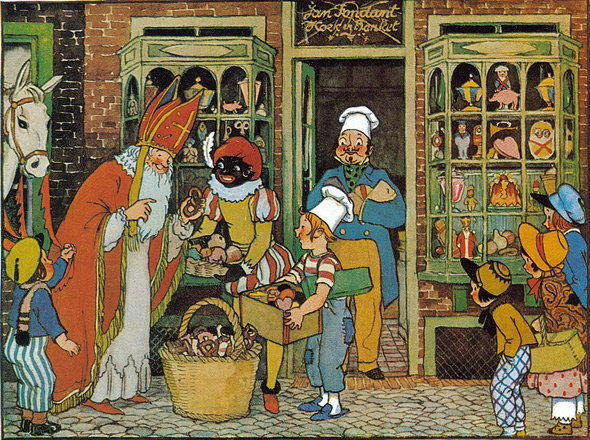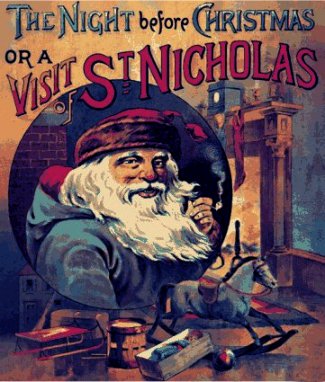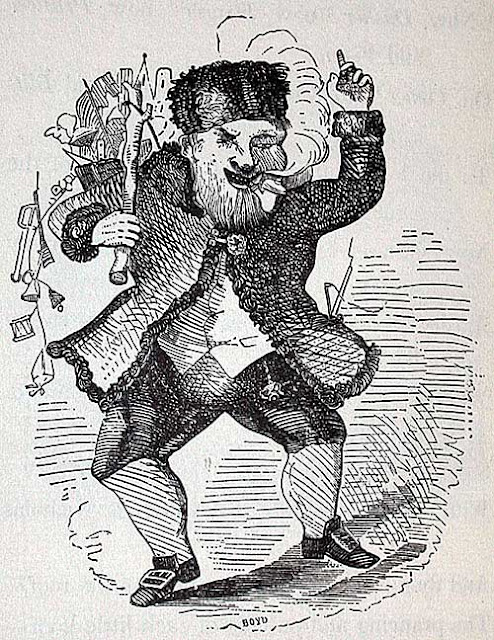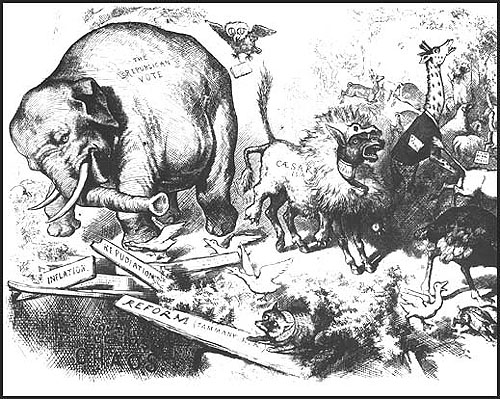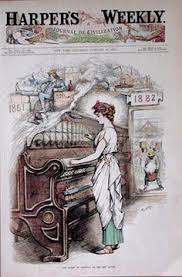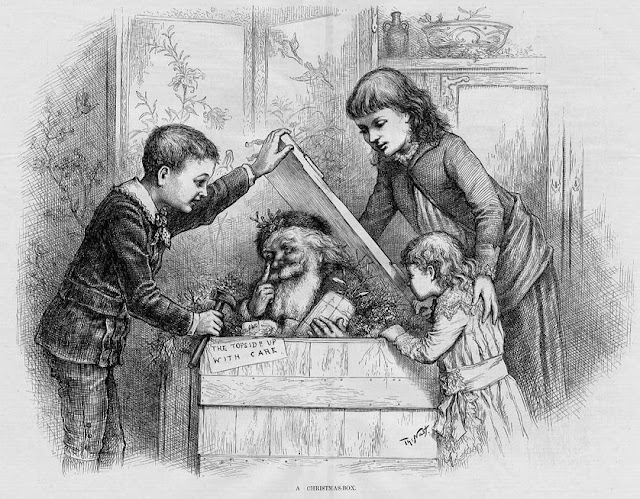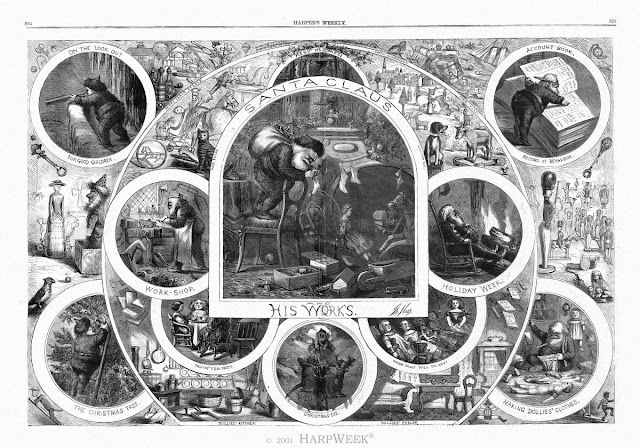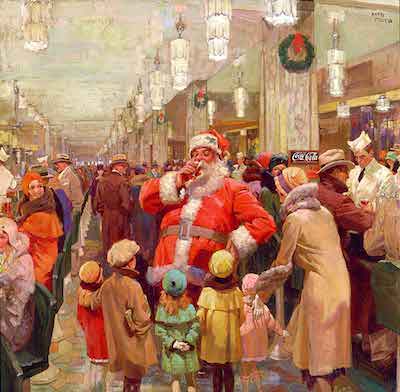I call it a recipe for magic. You begin with one pious Greek aesthetic. Let him rise at room temperature for a millennium or two before blending a little religious fear mongering and a revolution or two, add a smart-ass frat boy, an academic in ancient languages and just a pinch of the Bowery boys. Pour this mixture into the crust of an illiterate German-American and then bake at 350 degrees for a century. Finally, season to taste with relentless capitalism.
A scant 200 years after Jesus of Nazareth was crucified, the faithful in Alexandria, Egypt got curious about when exactly Jesus had been born. There were no records, of course. And in loo of any, the magi came up with a magical answer. Now, Matthew, Mark and Luke all said Jesus had been crucified on the morning after the Jewish “Passover” meal – putting his death squarely in the spring. But the Alexandrian magi decided it would be magical, meaning religious, if Jesus had been conceived on the same date on which he would die 33 years later. Nine months after the Jewish spring festival of Passover, comes the Jewish mid-winter festival of Hanukkah. And that, as near as I can tell, is the first compromise explaining why Jesus came be born on 25 December.
It didn't hurt that the popular god Mithra (above) and the even more popular the Unconquered Sun god, Sol Invictis (below), were already sharing that birthday. As Christian mouthpiece Cyprian of Carthage pointed out not long before losing his head in 258 of the Common Era, “Oh, how wonderfully acted Providence that on that day on which that Sun was born . . . Christ should be born." Whatever.
So now Christians could join the pagans in celebrating the birth of their gods – small “g” - alongside the birth of The God – large “G” - despite all the un-Christian behavior associated with the celebrations - over eating and boozing and dancing and sexually suggestive behavior like singing naked in the streets. Which only works if you live somewhere near the equator. And not long after this popular idea reached Constantinople, so did Saint Nicholas.
Now, for most of the last 1,300 years the Catholic Church has celebrated Nicholas as Bishop of the rich port of Myrna, on the southern coast of what is today Turkey. But while most early saints achieved sainthood by either being eaten by lions, stoned to death, lost their heads like Cyprian, or – a lucky few – were crucified Christ-like for refusing to renounce their faith.
However, Nicholas (above) died of old age and in his own bed. All he did to achieve sainthood was give his entire large inheritance to poor children. Well, to the church, of course, who then used it to feed and clothe poor children. To the average Christian that made Nicholas, who died on 6 December, 343 C.E., a saint. It also helped that “manna” periodically dripped from his tomb, and was sold as a miracle cure-all. Still the church officials, who mostly depended on rich people for their operating funds, have never been entirely convinced about this poverty being good for the soul, thing. They may say it but they do not practice it. So it was not with their help, but the rise of Islam a couple of hundred years later which started Saint Nicholas on the road to his north pole workshop.
Because it was Islamaphobia which financed the 3 Italian ships that arrived in Myrna in 1087. Claiming the Muslims were about to ransack his tomb - which they weren't, they were making too much money off the Christian tourists - the sailors bribed and bullied their way into Nicholas' church...
...smashed his shrine, stole, er, rescued, his bones – henceforth referred to as “relics” (above) - and spirited them home to the port of Bari, at the top of the heal of the Italian boot.
It seemed a perfect fit, because Bari had been the home of a pagan goddess named Pasqua Epiphania – the Grandmother – who once a year filled children's stockings with gifts. Now Nicholas would do the same, every 6 of December, in Catholic Italy, and not Eastern Orthodox and later Islamic Turkey.
With the publicity machine in Bari now squeezing money out of Pilgrims, Nicholas also became useful when Christianity was marketed to the pagan Anglo-Saxons of Germany and the Norse of Scandinavia, who had worshiped the blood thirsty Woden and the violent Thor. Every fall the white bearded Woden (above) would mount his flying horse and with his red cloak sailing behind, ride across the heavens, burning and destroying anything and anybody who got in his way.
Also sailing across the heavens with Wooden was the Norse god of thunder, Thor (above). He drove a chariot pulled by a pair of flying goats, improbably named Gnasher and Cracker. But Christianity found a way to tame these 2 angry and violent deities by making them children.
Every 6 December, the youngest boy in northern churches would don a false beard, Bishop's robes, and chose the foods and music for the St. Nicholas feast, afterward leading the other boys into the streets to collect alms for the poor. And if some of the lads should occasionally form gangs of snowball-throwing muggers, stealing from the rich and poor alike, well it was all in the domesticated spirit of Woden and Thor. But St. Nicholas would not become Santa Claus until the Americans had driven out the British.
The American Revolution didn't really change things that much. The Church of England became the Episcopalians, and the 13 colonies became 14 states, but mostly the people running things in 1775, locally anyway, were the same people running things in 1783 – English religion, English language and English class structure.
As to be expected, the post war generation rejected their parent's social conventions, and about 1804 - when John Pintard founded the New York Saint Nicholas Society - younger Gothamites decided to retroactively convert their grandparents' provincial illiterate English backwater into a provincial illiterate Dutch backwater. New York had once been New Amsterdam, but then Manhattan was also the name of a native American tribe, who had been thrown out.
Anyway, the cox man directing this voyage back to the future was a 26 year old Manhattan rich-kid smartaleck named Washington Irving (above).
When he joined the St. Nicholas Society in 1809, Irving's contribution was writing the cities' new foundation myth, the verbose and pretentious mockumentary, “History of New York from the Beginning of the World to the End of the Dutch Dynasty, by Diedrich Knickerbocker” (above). The author's name, like everything else in the book, was an overwritten joke. A worker who baked children's clay marbles was called, in Dutch, a Knickerbocker, and during the Federalist Period it was the equivalent of calling the author “Joe the Plumber” or “John Q. Public”.
Irving did not invent “Sinter Klass” - the Dutch translation of St. Nicholas. That figure was already filling children's stockings back in Holland on every 6 December. But the European Sinter Klass (above) was a pretend bishop who supposedly arrived by boat from Spain – remember the Netherlands used to be owned by Spain – and was accompanied by his Moorish assistant Zwarte Piet - Black Pete. St. Nicholas delivered presents to good children and Black Pete left coal and twigs in the stockings of bad children. But uncomfortably, in America, most black skinned people were slaves, so Irving avoided that moral complication in his story by dropping the assistant, and re-imagined Nicholas as...
...a jolly, little plump Dutch elf wearing a tri-cornered hat, a red waistcoat above a “huge pair of (yellow) Flemish trunk hose,” and smoking a clay pipe. Irving's history claimed everybody in New York believed in this Sinter Klass. In truth, few in New York had ever heard of him. The entire thing was a gag, a joke, a jape. Irving's “History...” like his "Legend of Sleepy Hollow” - was just another adapted Dutch story with heavy English social overtones. Still, the Knickerbocker Tales" was "The first notable work of imagination in the New World" in somebody's opinion.
Enter printer William Gilley was yet another member of the St. Nicholas Society and a book publisher. One of his most successful money makers was his annual illustrated series, “The Children's Friend”. In Volume 3, which came out in 1821, appeared an anonymous poem which began with good intentions - “Old Sante Claus with much delight, His reindeer drives the frosty night , O'er chimney tops and tracks of snow...” But this author wanted a politically correct Christmas, so Sante promised, “...No drums to stun their Mother's ear, nor swords to make their sisters fear; but pretty books...” Beyond the fun police, the poem also introduced Santa driving a sleigh pulled by a single flying reindeer. Gilley later insisted the unnamed author's mother had been “an Indian” (native American) who lived in the north where reindeer were common and could fly.
That same year one of Gilley's neighbors also put pen to paper. He was an academic who had already composed the well-named 2 volume “Compendious Lexicon of the Hebrew Language” (1809), and similar ponderous intellectual non-fiction. But Clemet Clarke Moore (above) was also a part time poet and the father of six children (he would eventually sire nine), and he wanted to make their Christmas as joyful as possible for children. Because father had been so boring.
So as Christmas 1822 approached, Moore decided to compose his own version of the myth, but with no lectures. It began, “Twas the night before Christmas, when all through the house, Not a creature was stirring, not even a mouse; The stockings were hung by the chimney with care, In hopes that St. Nicholas soon would be there...”
Under Moore's professional and well educated hand everything came together – St. Nicholas, Christmas eve, snow, and flying reindeer. But it was Moore the poet who rhythmical multiplied the beasts, with just a faint hint of those flying goats. “Now, Dasher! Now, Dancer! Now Prancer and Vixen! On, Comet! On, Cupid! On, Dunder and Blixem”. The last two names were Dutch for thunder and lightening, but within three editions of the poem their names had morphed into “Donner and Blitzen”, which still scanned but avoided sounding like popular jokes about visiting the outhouse.
But in Moore's poem Santa remained Irvings' original creation, a “jolly old ELF”- a dwarf, a munchkin, a little person, with a “round LITTLE belly”. That was how he fit down the chimney. He was small. And he was driving “...a MINIATURE sleigh and eight TINY reindeer”. Saint Nicholas not only delivered toys, he was a toy. How magical is that? All that was missing was for somebody to bring all these new pieces together. And the guy who did that was Thomas Nast.
I suspect that Thomas Nast (above) was dyslexic. Although his family had arrived from Germany when he was only 6 years old, “Tommy” was never comfortable reading or writing in English or German. But after finances forced him to drop out of the National Academy of Art, on Broadway and Leonard Street in lower Manhattan, the 15 year old became a staff artist for Frank Leslie's Weekly Illustrated Newspaper. Four years later he was offered more money by the New York Illustrated News as an artist-reporter. And the next year – 1860 – the now 20 year old was sent to England to cover a prize fight, and then on to Sicily to cover the war to unite Italy. On his return Nast – with just 50 cents in his pocket – was hired at a generous salary by Fletcher Harper, to draw for his “Harper's Weekly Illustrated News”.
Over his quarter of a century at Harper's, Nast invented the elephant as the symbol of the Republican Party - inspired by a mass escape from the Central Park Zoo - and popularized the donkey for the Democrats. Nast would scratch his drawings directly onto wood, before they were copied into metal plates for printing
Still his accurate caricatures so enraged Tammany Hall boss, William Tweed (above and below), the crooked politician ordered his supporters to “Stop them damn pictures... My constituents can't read. But, damn it, they can see the pictures."
But Nast turned down a $50,000 bribe to quit drawing Tweed, and hounded the crook until he was arrested. After Tweed jumped bail and escaped to Spain, it was Nast's famous drawings which ensured Tweed was recognized and extradited. But it was Nast's yearly Christmas drawings that changed Santa Clause from a diminutives regional figure, into first a national and then an international symbol.
In 1861 Tommy Nast had married Sarah “Sallie” Edwards, “with brown hair, a graceful form and delicate damask cheeks”. In his drawings she became his idolized image of “Columbia” (above), symbol of the United States and Freedom. The couple remained deeply devoted to each other for the rest of their lives, and raised 5 children together – 3 girls and 2 boys. Sallie was his business manager, and it was she who read Clement Moore's poem to Tommy, and he enshrined it's images for all time.
And as his children grew, so did his Santa Claus, 24 Christmas in a row, 76 etchings in all - becoming a full-sized St. Nicholas, a bearded and smiling hedonist, a real person, unrecognizable anymore as the aesthetic Bishop of Myrna. And he had a new address. Instead of coming from “the north”, Santa's workshop was at the North Pole. Because nobody had ever or was ever going to actually get there.
And there were the Christmas Cards, an invention inspired in large part to market Nast's beloved images. And he presented the first image of a child mailing a letter to Santa Claus.
Santa's pipe, which had started out as a Dutch practical clay, Nast replaced with German meerschaum. And from Nast's own Bavarian childhood, he included a Christmas Tree in the party. Thomas Nast's etchings transcended linguistics. In Europe, where St. Nicholas' Feast was still being celebrated on 6 December, Nast's Santa Claus began shifting the holiday emphases to 25 December.
After Thomas Nast, little changed about Santa Claus until Joe Mizen, who painted billboards for the Coke-a-Cola Company, and came up with a tie-in for the Famous Barr Company Department store in St. Louis, Missouri, which boasted they had the world's largest soda fountain. He called his 1930 creation “The Busiest Man in the World”.(above) It showed Santa taking a break on his rounds for a little "pick me up". Once again it treated the latest incarnation of St. Nicholas as a real man, and Coke decided to use his Santa the magazine ads all that year.
But the image worried Archie Lee, the executive for the Coke account at the D'Arcy Advertising Agency, who imagined beer companies hijacking the image, once prohibition came to an end. Lee felt Coke needed a more wholesome and realistic Santa. And one of the artists he hired to develop this mythical real man was Haddon Sundblom - a nice average Swedish-American name.
Sundblom modeled his Santa after his friend, salesman Lou Prentess. And from 1931 to 1964, Haddon was the man who defined what Santa Clause looked like, for all of us - “...plump belly, sympathetic face, jovial air, and debonair bearing.” And white, of course. In this modern version, the traditional Santa was full sized, but his workers were all elves.
And that is the evolution of the mythology of Santa Claus. Still evolving. Now there is a ninth "red nosed" reindeer. And I smell more evolution on the winter breeze. If Christmas is to live in the hearts of children, it must keep evolving with them.
It is hard to imagine how Santa will change in the future. My guess is we will have to go backward, again, and reinvent the past. Or perhaps envision Santa Claus as a computer server delivering presents via reindeer drones. However the future comes, I am certain Santa will never die. Mythical characters never do. Not really. Just ask Mythra, Pasqua Epiphania or Sol Invicits.





